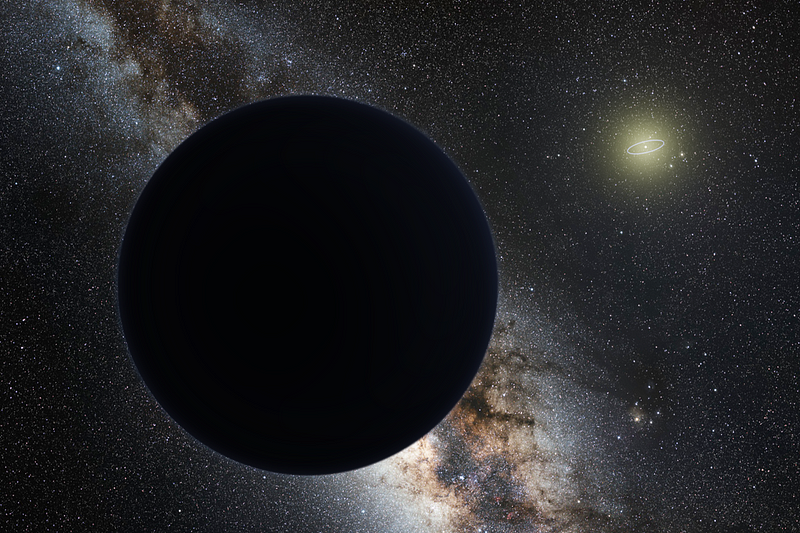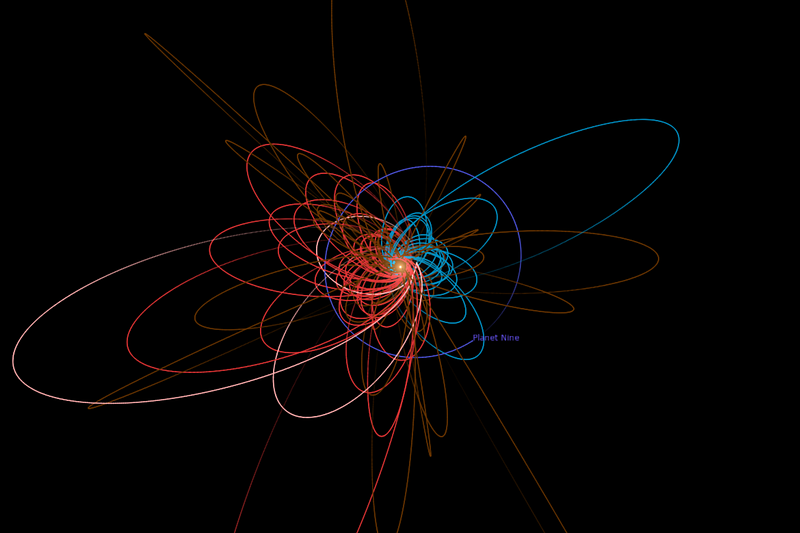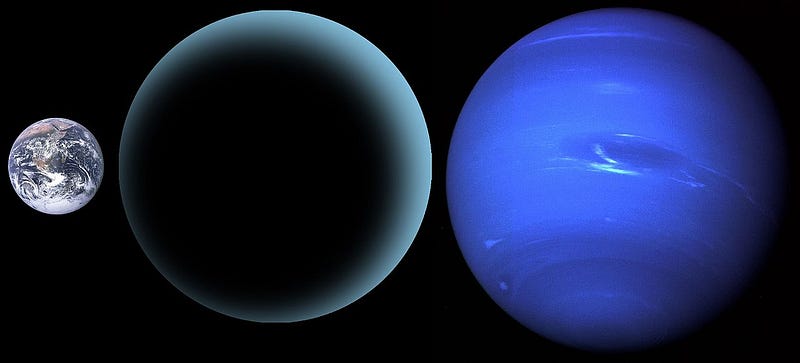The Kuiper Belt Mystery: Unraveling the Planet 9 Enigma
Written on
Chapter 1: The Kuiper Belt and Its Peculiarities
The unusual patterns observed among icy bodies in the Kuiper Belt may hint at the presence of Planet 9. Yet, attempts to locate it have not yielded results, perhaps due to misdirected searches.

[Image source: nagualdesign; Tom Ruen, background taken from File:ESO — Milky Way.jpg, CC BY-SA 4.0, via Wikimedia Commons]
While concrete evidence remains elusive, curiosity surrounding Planet 9 has intensified since a pivotal paper surfaced a few years ago. This research proposed that Neptune might not be the solar system's outermost planet. The hypothetical Planet 9 is believed to orbit the Sun at a distance several hundred times that of Earth.
Astrophysicist Man Ho Chan from the Chinese University in Hong Kong suggests a different approach in the hunt for Planet 9. Instead of searching the vastness of space for the planet itself, he advocates for monitoring the heat signatures emitted by its potential moons. "In such distant and frigid regions of our solar system, heat can only emanate from one source," he asserts, referring to the tidal heating resulting from the gravitational pull between a moon and its parent body.

[Image source: Nrco0e, CC BY-SA 4.0, via Wikimedia Commons]
The debate over Planet 9's existence continues among astronomers. It first appeared in scholarly discussions in 2016 when researchers Mike Brown and Konstantin Batygin from Caltech highlighted the unusual behaviors of certain small icy objects in the Kuiper Belt. This belt extends beyond Neptune, the current furthest recognized planet, which is about 4.5 billion kilometers from the Sun. Estimates suggest it contains anywhere from tens of thousands to millions of small celestial objects, with the most distant ones orbiting at around 7-8 billion kilometers from the Sun.
Collectively known as cubewano, named after the first asteroid discovered in this region, Brown and Batygin observed that some objects within this category exhibit grouped orbital patterns, implying possible gravitational influence from a larger body. Their initial calculations indicated that Planet 9 could possess a mass roughly five times that of Earth and orbit at a distance of 40-50 billion kilometers from the Sun, ten times farther than Neptune. However, a later study in 2021 adjusted this distance, placing Planet 9 slightly closer yet still in the tens of billions of kilometers range.
Despite extensive searching, efforts to locate Planet 9 have been unsuccessful. Opinions among astronomers vary, with some suggesting that Brown and Batygin may have rushed their statistical analyses due to the limited number of known cubewano objects. Others speculate that the mysterious planet might be a small black hole, a cloud of dark matter, or even a rogue planet moving through space by a path of its own.

[Image source: PlanetUser, CC BY-SA 4.0, via Wikimedia Commons]
Chapter 2: Innovative Search Strategies
In the video "The Hidden Planet That Could Change Everything: A New Perspective on the Kuiper Belt," experts discuss the implications of Planet 9's potential existence and the scientific community's response to its ongoing mystery.
Man Ho Chan believes that conventional methods targeting the areas where Planet 9 is presumed to be might be akin to searching for a needle in a haystack. He posits that the planet could be following an atypical orbit—one that is highly eccentric and significantly inclined from the ecliptic plane.
What alternative remains? Chan proposes focusing on the moons of this hypothetical planet. He estimates that if Planet 9 is indeed five times Earth's mass, it might possess up to 20 moons in orbit around it. Such a cluster would generate considerable tidal forces, similar to those experienced between Earth and its Moon, leading to significant internal heating of these moons.
For instance, Io, one of Jupiter's moons, is known for its active volcanoes, a result of the gravitational forces acting upon it. Similarly, geysers on Enceladus, Saturn's moon, project material up to 100 kilometers high despite its icy exterior. This internal heating mechanism could also be at play within the moons of Planet 9, producing detectable thermal signatures far beyond the Kuiper Belt.
Chan suggests that these heat signals could be identified by the ALMA radio astronomy observatory, which consists of 66 antennas located in northern Chile.
The second video, "Kuiper Belt Orbiter, Naming Planet 9, Most Perfect Spheres | Q&A 246," delves into the ongoing discussions surrounding the existence of Planet 9 and the scientific theories being explored to confirm or refute its presence.
As the quest for Planet 9 continues, the exploration of the Kuiper Belt remains a captivating subject, inviting both scientific inquiry and public imagination.
Cool that you made it to the end of this article! I would greatly appreciate your support by giving it a clap or perhaps following me. A tip would also be wonderful! Thank you!